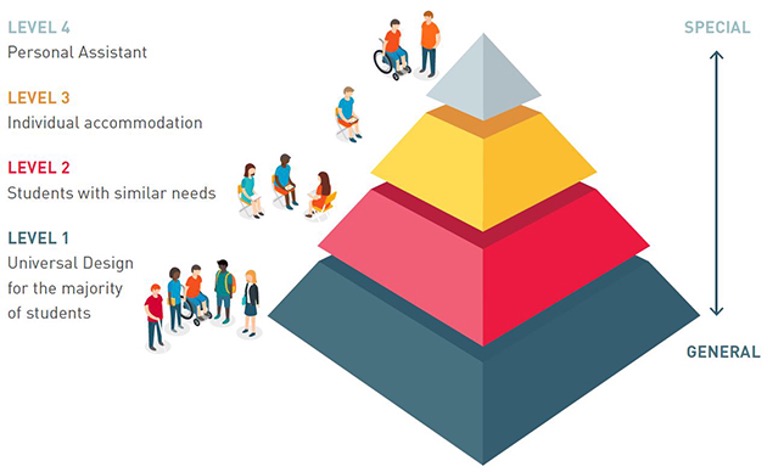Universal Design for Learning: A Practical Guide
Section 3.9: UDL and Accommodation Planning
Universal Design for Learning (UDL) and Accommodation Planning share some similarities but are essentially different concepts. Accommodation planning is mandated to ensure that persons with disabilities have the right to access educational institutions. UDL can be a mechanism in that process without focusing specifically on individual students with disabilities, and instead, focusing on what would be maximally instructive for as many students as possible.
You may begin to consider UDL framework in your classes in response to the accommodation processes because
- There are so many accommodation plans in your classes that it is difficult to provide individualized attention to the students;
- There are aspects of accommodation plans that are easy to implement without needing to resort to specialized planning. For example, if you use UDL framework to create audio recording for your lectures and provide options for exams, those are accommodations that a student doesn’t need to seek for individualized planning.
This pyramid, developed by disability specialists at AHEAD (2017), illustrates the way that we can think about UDL in relation to accommodation planning.

At the bottom level, and as a general approach to teaching and learning in post-secondary institutions, we can apply UDL principles that include the majority of students. As you learn more about UDL, this means that as the instructor, you are considering the design of your syllabus, the types of activities students undertake, whether you convey information in multiple modalities (e.g., seeing, reading, listening, diagramming), and whether students are provided choices and participation in their educational journey.
As we know, accessibility is featured as part of existing technology, UDL dives deep into the way students learn. Where accessibility focuses on access, UDL focuses on becoming an expert learner. While accessibility features serve to mitigate disability-related barriers, UDL starts with variation in learners; the design of the learning environment may not even see a disability label.
Below, accessibility and UDL are contrasted:
| Accessibility Features (Reactive) | Universal Design for Learning (Proactive) |
|---|---|
| Wheelchair accessible desks | Explicit learning outcomes |
| Accessible documents | Student and instructor feedback |
| Door opening buttons | Building relationships |
| Ramps | Assessing engagement |
| Closed captioning | Self and peer assessment |
| Screen readers | Guiding goal setting |
| Text to speech software | Providing choice |
| Braille on signs | Student-designed rubrics |
| Represent information in multiple ways |
By planning proactively and for as many students as possible, your workload around individualization will be decreased. Students who experience disability-related barriers will not only feel included but will be relieved of the additional work they would normally have to undertake in the accommodation process.

